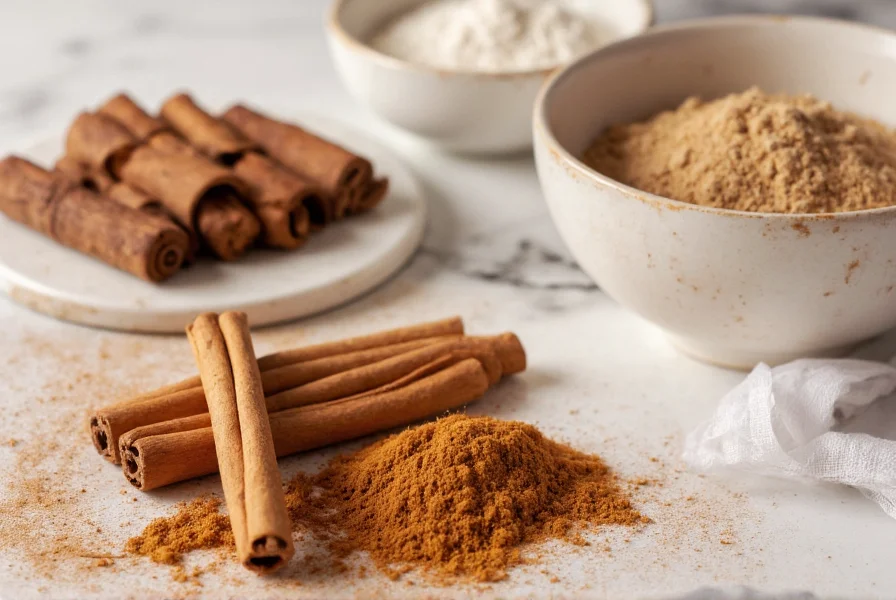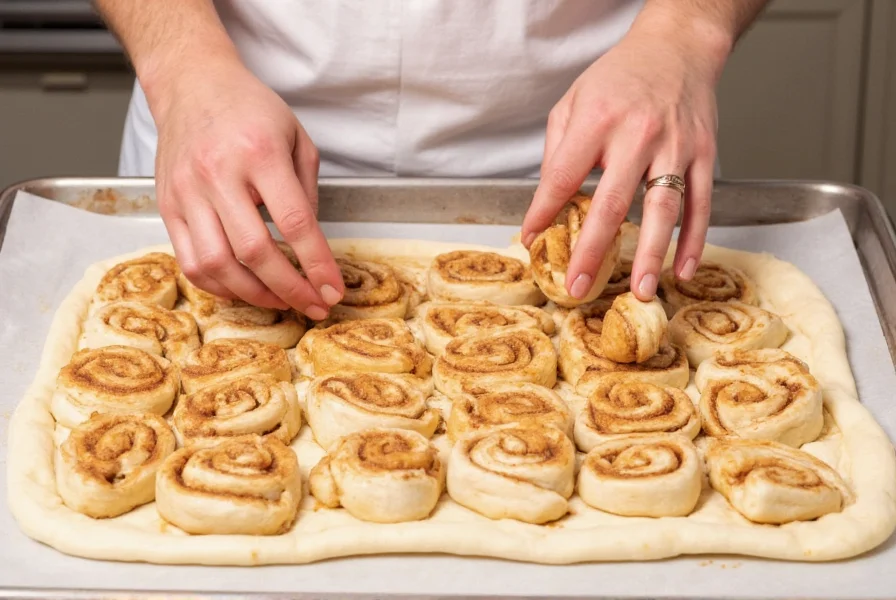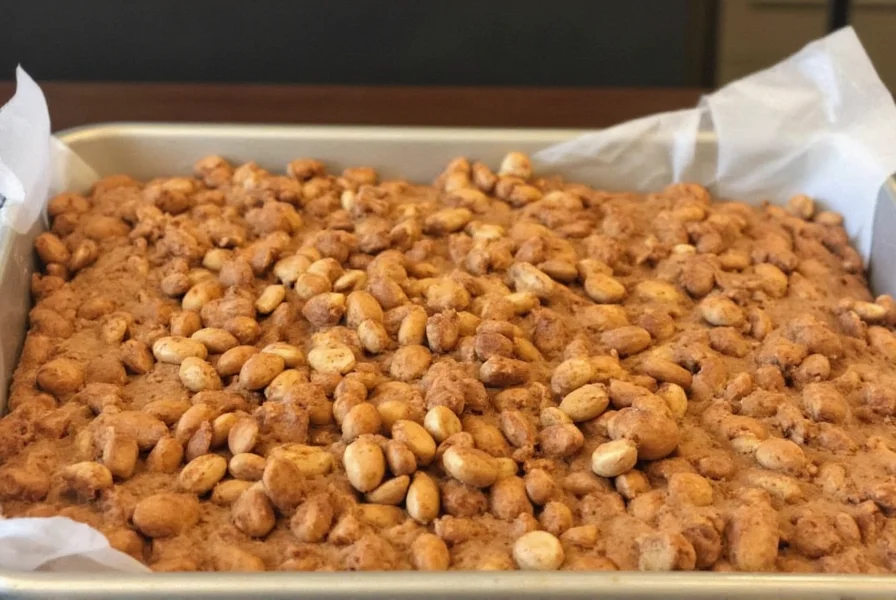When it comes to baking with cinnamon, understanding the different varieties and their proper applications can transform your baked goods from ordinary to extraordinary. While many home bakers reach for the familiar red-labeled jar without consideration, selecting the right cinnamon and using it properly makes a significant difference in flavor development, color, and overall baking success.
Understanding Cinnamon Varieties for Baking
Cinnamon isn't a single spice but rather comes from several related tree species, with two primary varieties dominating the baking world:
| Cinnamon Type | Flavor Profile | Best Baking Applications | Coumarin Content |
|---|---|---|---|
| Cassia (Chinese) Cinnamon | Bold, intense, sweet-spicy with woody notes | Cinnamon rolls, snickerdoodles, spice cakes, gingerbread | High (2.5-5% coumarin) |
| Ceylon (True) Cinnamon | Milder, sweeter, more complex with citrus notes | Delicate pastries, custards, ice cream, whipped cream | Very low (0.004% coumarin) |
Professional bakers typically prefer Cassia cinnamon for most baking applications because its robust flavor withstands high temperatures and prolonged baking times without dissipating. The stronger presence of coumarin in Cassia contributes to that familiar "cinnamon" aroma we associate with baked goods.

Optimal Cinnamon Measurements for Baking Success
Getting the measurements right is crucial when baking with cinnamon. Too little won't provide sufficient flavor, while too much can create bitterness and overpower other ingredients. Consider these professional guidelines:
- For standard cookie recipes (yielding 24 cookies): 1½ to 2 teaspoons of ground cinnamon
- For yeast breads and rolls: 2 to 3 tablespoons in the dough plus additional for filling
- For cakes and muffins: 1 to 1½ teaspoons per 2 cups of flour
- For pie fillings: ½ to 1 teaspoon depending on fruit type
When creating cinnamon fillings for rolls or pastries, the classic ratio is 1 cup brown sugar to 3 tablespoons ground cinnamon. This balance provides that perfect sweet-spicy combination without overwhelming the palate.
Timing Matters: When to Add Cinnamon During Baking
The timing of when you incorporate cinnamon into your baking process significantly affects the final flavor profile:
Dry ingredient incorporation: Mixing ground cinnamon with flour and other dry ingredients ensures even distribution throughout baked goods. This method works best for cakes, cookies, and muffins where consistent flavor is desired.
Layered application: For cinnamon rolls and spiraled pastries, applying cinnamon-sugar mixture to the rolled dough creates those distinctive flavor pockets. Professional bakers recommend using softened butter as the base layer before sprinkling the cinnamon mixture to ensure proper adhesion.
Finishing touch: A light dusting of cinnamon over finished baked goods (like coffee cakes or scones) provides an immediate aromatic experience. For this application, Ceylon cinnamon often works better due to its more delicate flavor.

Storage Techniques to Maintain Cinnamon Freshness
Cinnamon's flavor compounds degrade over time, especially when exposed to air, light, and moisture. To maximize shelf life and flavor potency:
- Store in airtight containers away from heat sources and direct sunlight
- Whole cinnamon sticks retain freshness longer (2-3 years) compared to ground cinnamon (6-12 months)
- For extended storage, keep in the freezer in moisture-proof containers
- Test freshness by rubbing a small amount between your fingers - fresh cinnamon should release a strong, sweet aroma
Many professional bakers grind their own cinnamon sticks using a dedicated spice grinder just before baking. This technique releases maximum flavor compounds and provides a noticeably superior taste compared to pre-ground cinnamon.
Common Cinnamon Baking Mistakes and Solutions
Even experienced bakers occasionally encounter issues when working with cinnamon. Here are frequent problems and professional solutions:
- Bitter aftertaste: Using too much cinnamon or adding it directly to wet ingredients without proper dispersion. Solution: Always mix cinnamon with dry ingredients first and adhere to recommended measurements.
- Color bleeding: In cinnamon rolls, the filling sometimes creates dark streaks in the dough. Solution: Use a thin layer of softened butter as a barrier before applying cinnamon-sugar mixture.
- Flavor dissipation: Cinnamon flavor seems to disappear after baking. Solution: Increase cinnamon by 25% when baking items that require longer cooking times (over 30 minutes).
- Lumpy texture: When making cinnamon-infused creams or fillings. Solution: Bloom ground cinnamon in a small amount of warm liquid before incorporating into recipes.
Cinnamon Substitutions and Complementary Flavors
When cinnamon isn't available or you want to create more complex flavor profiles, consider these professional alternatives:
- Allspice: Use ¾ teaspoon allspice for every 1 teaspoon cinnamon (works well in spice cakes)
- Clove and nutmeg blend: Combine ½ teaspoon nutmeg with ¼ teaspoon clove for every 1 teaspoon cinnamon (ideal for holiday baking)
- Apple pie spice: Substitute 1:1 for cinnamon in most applications (contains cinnamon plus complementary spices)
Cinnamon pairs exceptionally well with citrus flavors, particularly orange and lemon zest. Adding 1 teaspoon of citrus zest to cinnamon-based recipes creates a more complex, professional flavor profile that elevates simple baked goods.
Safety Considerations for Baking with Cinnamon
While generally safe, cinnamon requires some considerations for regular baking use:
- Cassia cinnamon contains coumarin, which in large quantities can affect liver function. The European Food Safety Authority recommends limiting daily coumarin intake to 0.1 mg per kilogram of body weight.
- For regular cinnamon roll consumption or daily cinnamon use in baking, consider alternating between Cassia and Ceylon varieties.
- When baking for children or individuals with liver conditions, Ceylon cinnamon provides the cinnamon flavor with minimal coumarin content.
Conclusion: Mastering Cinnamon in Baking
Understanding the nuances of cinnamon varieties, proper measurements, and application techniques transforms ordinary baked goods into professional-quality creations. By selecting the appropriate cinnamon type for your specific baking application and following these expert guidelines, you'll achieve consistent, flavorful results that showcase cinnamon's unique ability to enhance both sweet and spiced baked goods. Remember that fresh, properly stored cinnamon makes the most significant difference in final flavor quality, so pay attention to your spice cabinet inventory and replace cinnamon regularly for optimal baking results.
Frequently Asked Questions
Can I substitute Ceylon cinnamon for Cassia in baking recipes?
Yes, but you'll need to adjust quantities. Ceylon cinnamon is milder, so use approximately 25-50% more than the recipe specifies for Cassia. For recipes requiring strong cinnamon flavor (like cinnamon rolls), Cassia remains the better choice as Ceylon may not provide sufficient flavor intensity after baking.
Why does my cinnamon roll filling sink to the bottom during baking?
This happens when the filling isn't properly secured between dough layers. Professional bakers recommend using softened (not melted) butter as a base layer before applying cinnamon-sugar mixture. The butter acts as an adhesive and creates steam pockets that help the filling stay in place during baking. Also, avoid overfilling and ensure proper sealing of the rolled dough.
How can I prevent cinnamon from making my baked goods bitter?
Bitterness occurs when using too much cinnamon or when cinnamon is exposed to high heat for extended periods. To prevent this, measure carefully (stick to 1-2 teaspoons per 2 cups of flour for most applications), mix cinnamon thoroughly with dry ingredients before adding liquids, and consider reducing baking time by 2-3 minutes for cinnamon-heavy recipes. Using fresh cinnamon also helps avoid bitter notes that develop in stale spices.
Does the type of cinnamon affect the color of baked goods?
Yes, Cassia cinnamon produces a deeper reddish-brown color in baked goods compared to the lighter tan hue from Ceylon cinnamon. This color difference becomes particularly noticeable in lighter-colored baked goods like vanilla cakes with cinnamon swirls. Professional bakers sometimes blend both varieties to achieve the ideal color and flavor balance for specific recipes.
Can I use cinnamon essential oil in baking instead of ground cinnamon?
Cinnamon essential oil is extremely concentrated and not recommended for direct use in baking. It requires careful dilution (typically 1 drop equals approximately 1 teaspoon ground cinnamon) and should only be used in applications where it can be properly dispersed. Most baking professionals recommend sticking with ground cinnamon or cinnamon extract specifically formulated for culinary use to ensure consistent flavor and safety.











 浙公网安备
33010002000092号
浙公网安备
33010002000092号 浙B2-20120091-4
浙B2-20120091-4